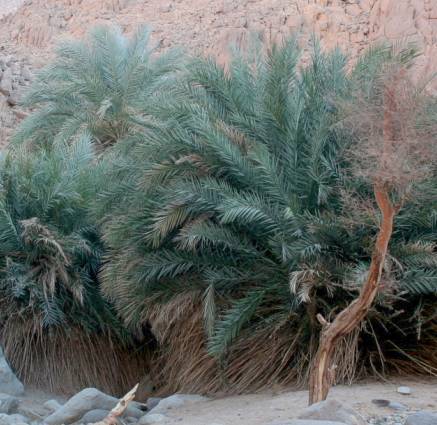|
The Jebel Uweinat is a small isolated mountain massif in the three-country
corner of Libya-Egypt-Sudan. It lies in a hostile hot desert region, far
from the civilization. The climatic conditions are due to decades missing
rainfall for vegetation extremely difficult. Today, trees in the rugged
terrain of the mountains only in dry wadis can surviving. There are only
acacias that with their long roots the remaining water reservoirs in the
underground use.
In the past, the climate in the Uweinat was much friendlier for the vegetation,
then in the recent past with a tendency to deteriorate. That is documented
by many rock paintings from the Neolithic period and the remains of dwellings
of the residents of the last nomadic Tibu people.
The Egyptian Ahmed Pasha Hassanein was the first explorer to reach
the Uweinat in 1923. The settlement was already over at this time. The
Uweinat was apparently visited only occasionally by the descendants of
the Tibu people.
Today only interested trekkers traveling in the Uweinat and walk far on
the plateau. Smugglers and camel-caravans to pass only the peripheral
areas. After robberies on trekkers in recent years is the official way
to reach the Uweinat now severely limited.
There were and are still several permanent water sources (Ain) in dry
wadis. They are leachate sources supplied from the mountains. Known are
Ain Zueia, Ain Dua and Ain Duarme in the Libyan part, and Bir Murr (Ain-el-Brins)
in the Sudanese part of the Uweinat. Smaller Gueltas in the lower course
of the Wadi Wahesh or on the plateau are only temporarily filled by rainfall.
Since the 1930s could be known,
that date palms (Phoenix dactylifera) grow at the small water holes
between Ain Murr and Ain-el-Brins in the Karkur Murr. The first
mention and images from date palms were published in 2002 by Andras
Zboray (fjexpeditions.com). He had led a trekking group along the Karkur
Murr.
Also at Ain Duarme, in a side branch of Karkur Ibrahim, date palms
are now documented photographically. Date palms are missing in Ain Dua
and Ain Zueia
How is it possible that date palms grow in the difficult climatic situation
in the Uweinat. They are certainly here not more viable and are already
extinct. Within a radius of hundreds of kilometers there is no source
for date palms.
Therefore, it is almost certainly
just a pure coincidence, that date palms grow near water sources in these
dry wadis. Obviously, before perhaps a long time ago, some humans in these
places rested and have eaten date fruits.
A reproduction of the date palms
of the Jebel Uweinat is obviously not possible. There are only dwarf palms.They
do not bear fruits.
Date palms are dioecious.They have female flowers (they provide the fruits)
and male flowers (they provide the pollen). Wind or insects take over
the pollination of female flowers.
The reason for the lack of fruit could be the poor living conditions (no
or little substrate with nutrients). In any case, an
endemic species
has developed here.
|

All photos by Andras Zboray and
Gabor Merkl
|